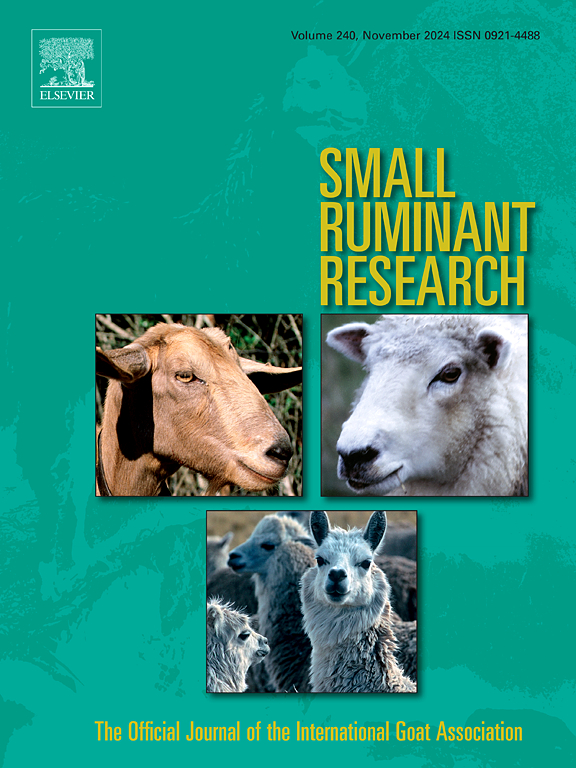Goat milk production and utilization by communal farmers in an arid region
IF 1.6
3区 农林科学
Q2 AGRICULTURE, DAIRY & ANIMAL SCIENCE
引用次数: 0
Abstract
This study aimed to investigate the factors influencing farmers' decisions to milk goats in the Beitbridge district. A total of 120 farmers were randomly selected, and data on goat flock structure, production constraints, and milk utilisation were collected using a structured questionnaire. Results showed that 53.3 % of the sampled farmers practiced goat milking. The primary reasons for not milking goats included low milk yields (42.1 %), cultural and traditional beliefs (42.1 %), and the perceived unpleasant taste and smell of goat milk (15.8 %). Among farmers who milked goats, 60.9 % reported an average yield of 250–500 ml per day during the wet season, while only 10.9 % obtained more than 1000 ml per day in the same period. Goat milking was primarily performed by children (68.8 %), with limited participation from fathers (3.1 %). Statistical analysis revealed that the household head’s (HH) level of education and the number of cattle owned significantly influenced (P < 0.05) the likelihood of milking goats. Farmers with higher education levels were more likely to engage in goat milking, suggesting that knowledge and awareness play a role in its adoption. Despite its nutritional benefits, goat milk remains underutilised in the district, largely due to low milk yields from indigenous breeds and limited awareness of its health advantages. Increasing farmer education and promoting improved breeds could enhance goat milk production and utilisation in the region. These initiatives could significantly contribute to improving both the quality and quantity of milk production, leading to better livelihoods for farmers and greater sustainability within the agricultural sector.
干旱区公社农民羊奶的生产和利用
本研究旨在调查北桥地区农民决定是否挤奶的因素。随机选取120名农户,采用结构化问卷收集羊群结构、生产制约因素和羊奶利用等数据。结果表明,53.3% %的农户进行羊奶生产。不给山羊挤奶的主要原因包括产奶量低(42.1% %)、文化和传统信仰(42.1% %)以及羊奶的味道和气味不佳(15.8% %)。在给山羊挤奶的农民中,60.9% %报告在雨季平均每天产奶量为250-500 毫升,而只有10.9% %报告在同一时期每天产奶量超过1000 毫升。挤羊奶主要由儿童(68.8% %)完成,父亲的参与有限(3.1% %)。统计分析表明,户主(HH)的受教育程度和拥有的牛的数量显著影响了挤奶山羊的可能性(P <; 0.05)。受教育程度较高的农民更有可能从事羊奶生产,这表明知识和意识在采用羊奶方面发挥了作用。尽管羊奶具有营养价值,但该地区羊奶的利用率仍然不足,主要原因是本地品种的羊奶产量低,而且对其保健益处的认识有限。增加农民教育和推广改良品种可以提高该地区羊奶的生产和利用。这些举措可以大大有助于提高牛奶生产的质量和数量,从而改善农民的生计,提高农业部门的可持续性。
本文章由计算机程序翻译,如有差异,请以英文原文为准。
求助全文
约1分钟内获得全文
求助全文
来源期刊

Small Ruminant Research
农林科学-奶制品与动物科学
CiteScore
3.10
自引率
11.10%
发文量
210
审稿时长
12.5 weeks
期刊介绍:
Small Ruminant Research publishes original, basic and applied research articles, technical notes, and review articles on research relating to goats, sheep, deer, the New World camelids llama, alpaca, vicuna and guanaco, and the Old World camels.
Topics covered include nutrition, physiology, anatomy, genetics, microbiology, ethology, product technology, socio-economics, management, sustainability and environment, veterinary medicine and husbandry engineering.
 求助内容:
求助内容: 应助结果提醒方式:
应助结果提醒方式:


